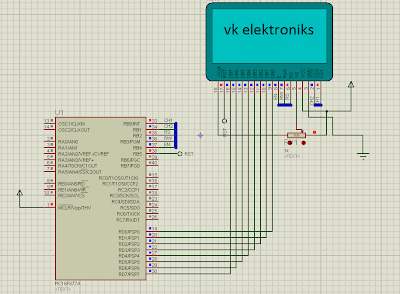Here is a sample code to Interface Graphical LCD to a PIC Controller
CODE
#define KS0108
#include "LibraryHardware.h"
#include "LibraryChar.h"
#include "LibraryUniversalDisplay.h"
#include "LibraryData.h"
void pic_init(void);
void main()
{
int i,j;
pic_init(); //initialize
PIC
glcd_init(); //initialize
GLCD
for(;;){
for(i=0;i<8;i++){
CHIP_LEFT();
glcd_goto(i,0,0);
for(j=0;j<=63;j++)
glcd_write(img1[128*i+j]);
CHIP_RIGHT();
glcd_goto(i,0,0);
for(j=0;j<=63;j++)
glcd_write(img1[128*i+j+64]);
}
delay(1000);
for(i=0;i<8;i++){
CHIP_LEFT();
glcd_goto(i,0,0);
for(j=0;j<=63;j++)
glcd_write(img2[128*i+j]);
CHIP_RIGHT();
glcd_goto(i,0,0);
for(j=0;j<=63;j++)
glcd_write(img2[128*i+j+64]);
}
delay(1000);
}
}
void pic_init(void)
{
TRISA=0b00101111;
TRISB=0b00000000;
TRISC=0b00000000;
TRISD=0b00000000;
TRISE=0b00000111;
set_digital();
PORTA=0b00010000;
PORTB=0b00000000;
PORTC=0b00000000;
PORTD=0b00000000;
PORTE=0b00000000;
}

